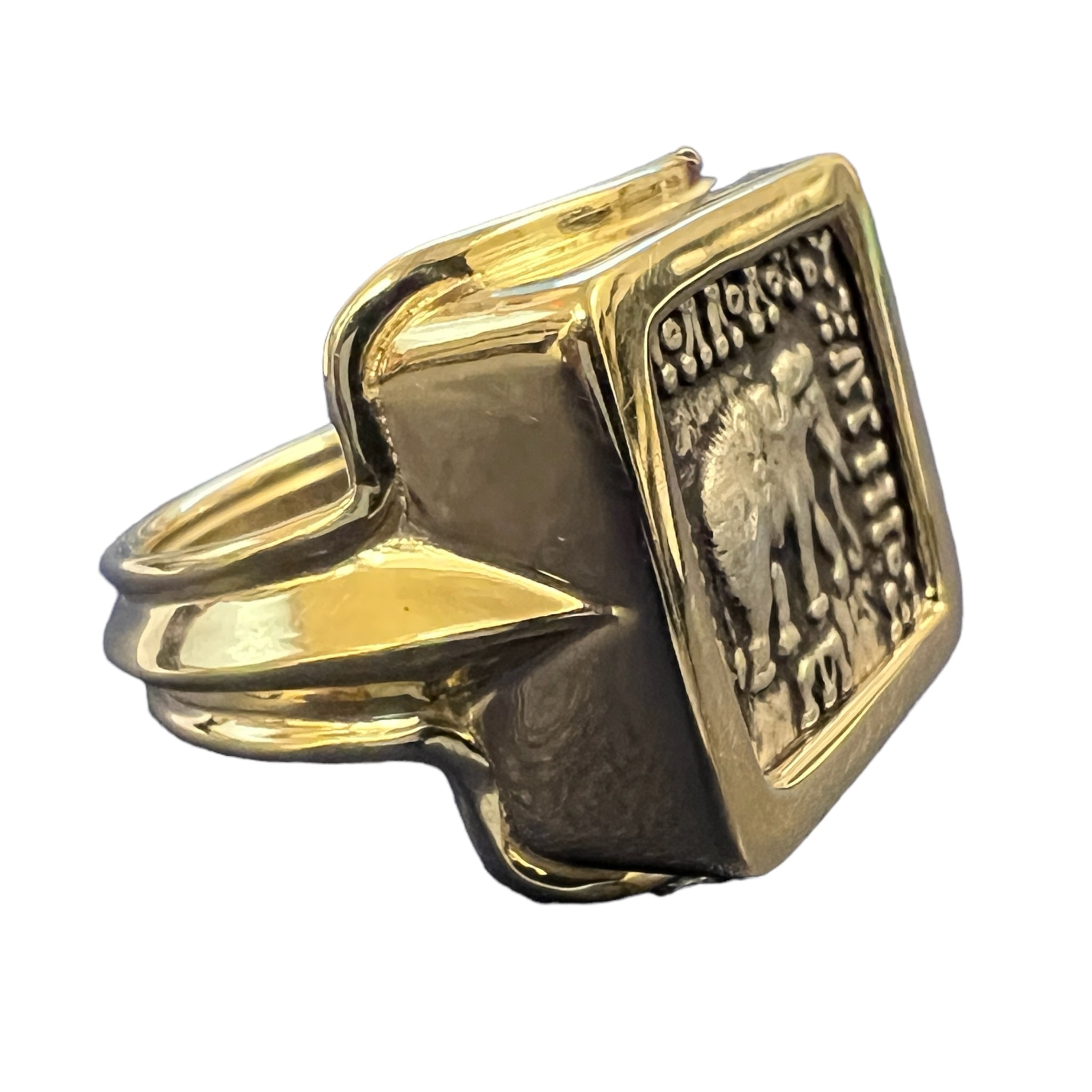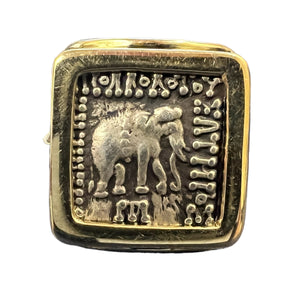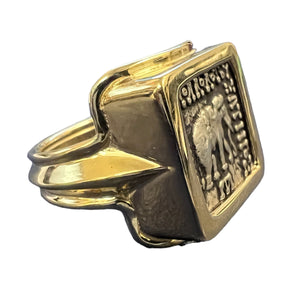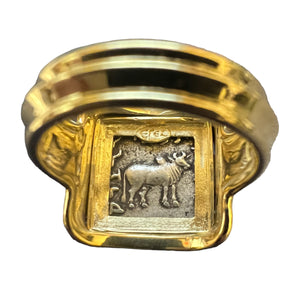Ancient India - Apollodotus Drahm - Circa (174-165) BC
$3,566
Denomination: Silver "Indian" weight drachm.
Date: Circa 174-165 BCE
Weight: 2.38 gm., Dim: 15 x 16 mm
Mount: 14K gold
Description: Obverse: Elephant walking right, Greek legend on three sides: BAΣIΛEΩΣ AΠOΛΛOΔOTOY ΣΩTHPOΣ monogram below. Reverse: Humped bull standing right, Kharosthi legend on three sides: maharajasa apaladatasa tratarasa.
History: Before their design was eventually simplified, some of the earlier coins of king Apollodotus directly associate the elephant with Buddhist symbolism, such as the stupa hill (arched-hill symbol) surmounted by a crescent or a star (the Chaitya symbol), also seen, for example on the coins of the Mauryan Empire, many local coins of Taxila or those of the later Kuninda kingdom.
Also, the zebu bull on the reverse is often shown with a nandipadataurine mark on its hump on the less-worn coins, which reinforces the role of the animal as a symbol, religious or geographic, rather than just the depiction of an animal for decorative purposes. The nandipada and the zebu bull are generally associated with Nandi, Shiva's humped bull in Hinduism. The same association was made later on coins of Zeionises or Vima Kadphises. The elephant, pendant to the bull, and shown with a girdle on the obverse, also must have a symbolic role, possibly Buddhism, as it was associated with the stupa hill in the earliest coins of Apollodotus.






